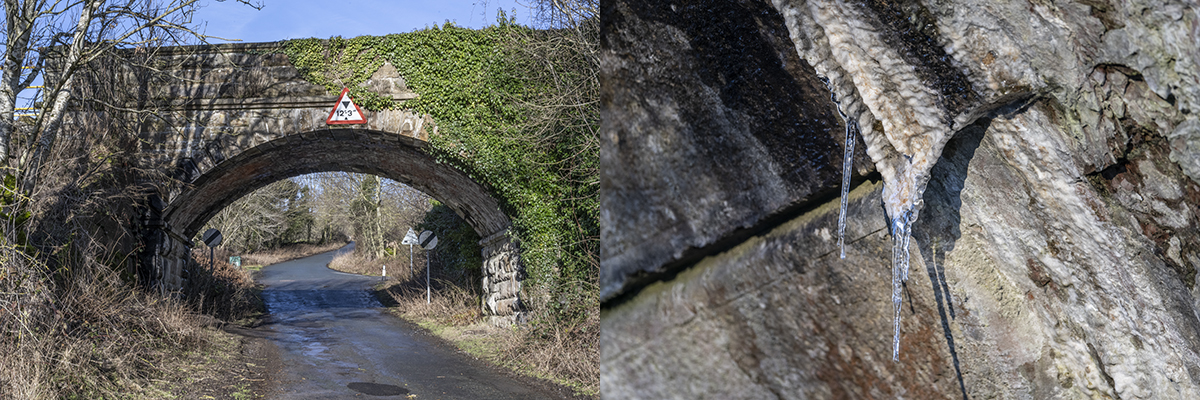Redmire
Wildlife habitats in a Wensleydale village
A village can provide a different set of habitats to the surrounding farmland. Buildings provide shelter, perching and nesting places. Bird feeders provide much needed food during the winter and at brood raising time. Gardens can be a rich source of food, especially if shrubs are left to provide plenty of cover and fruits. A varied selection of flowering plants extends the natural flowering season, increases the variety and density of flowers, and so is a valuable resource to pollinating insects. In the autumn, decaying vegetation provides another habitat for many invertebrates and fungi.
Redmire has the advantage of large village greens with several mature trees. Gardens are generally quite small, but well stocked and mature, with hedges and walls that increase the range of habitats. Gardeners can further increase diversity by leaving small areas of long grass and nettles.

Railway bridge on Hargill Lane built c.1878, clothed in Ivy, Hedera helix. Under the arch are stalactites, presumably formed by water dripping from the lime mortar. Shown here with icicles.
Redmire
Slide 1: Road sign on entering the village.
Slide 2: Maple tree, Acer spp. on the top green, showing autumn colour.
Slide 3:Brown Fruit Rot, Monilia fructigena, on apple, Malus. An example of fungal activity and natural recycling.
Slide 4: Jackdaws, Corvus monedula, fly from a roost in a large sycamore tree, Acer pseudoplatanus.
Slide 5: Jackdaws, Corvus monedula, perch on a house chimney.
Slide 6: Chaffinches, Fringilla coelebs, at a garden feeder.
Slide 7: Bumble Bee queen, Bombus lapidarius, foraging on Cotoneaster horizontalis, a garden shrub in the rose family that provides spring nectar and autumn berries.
Slide 8: A cultivated Sedum spectabile provides late season nectar for a Small Tortoiseshell butterfly, Aglais urticae, in a Redmire garden.







